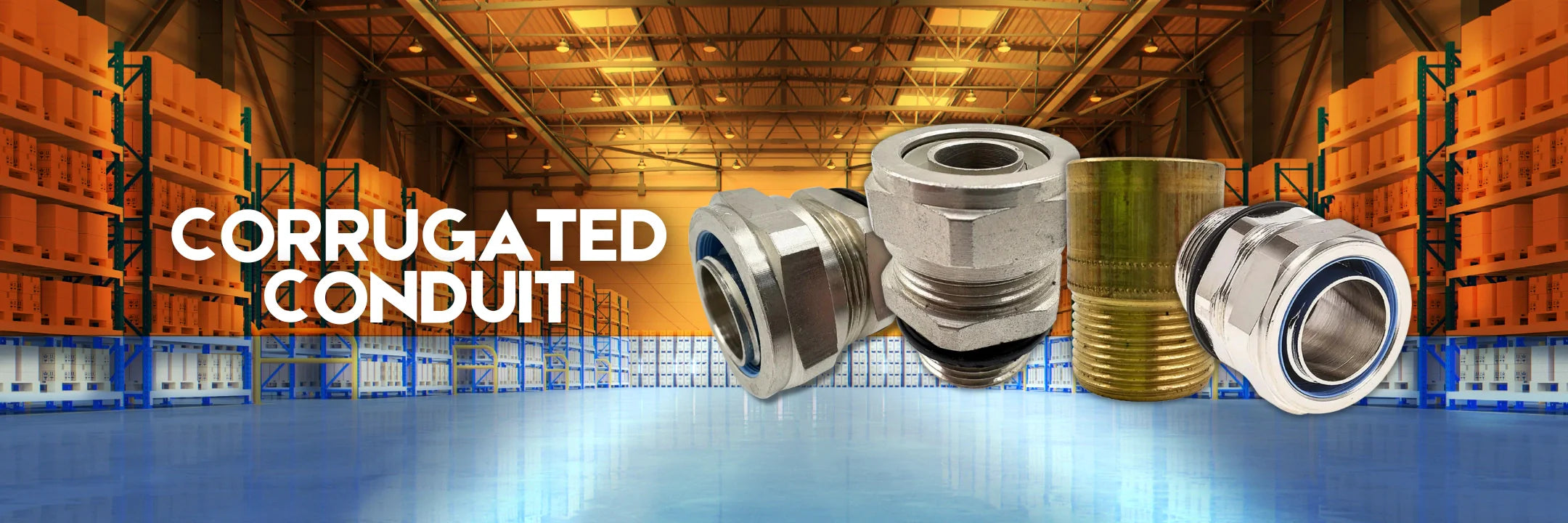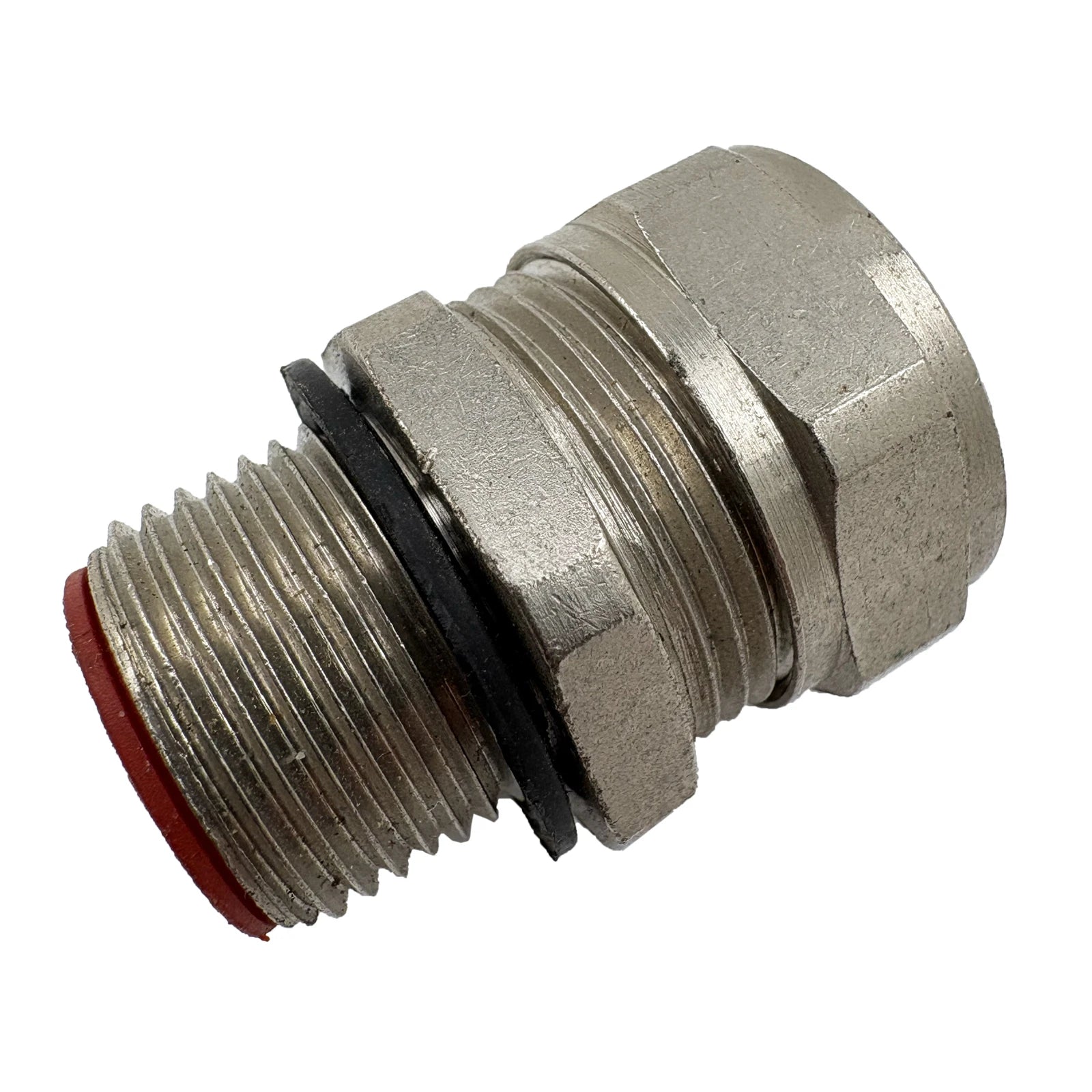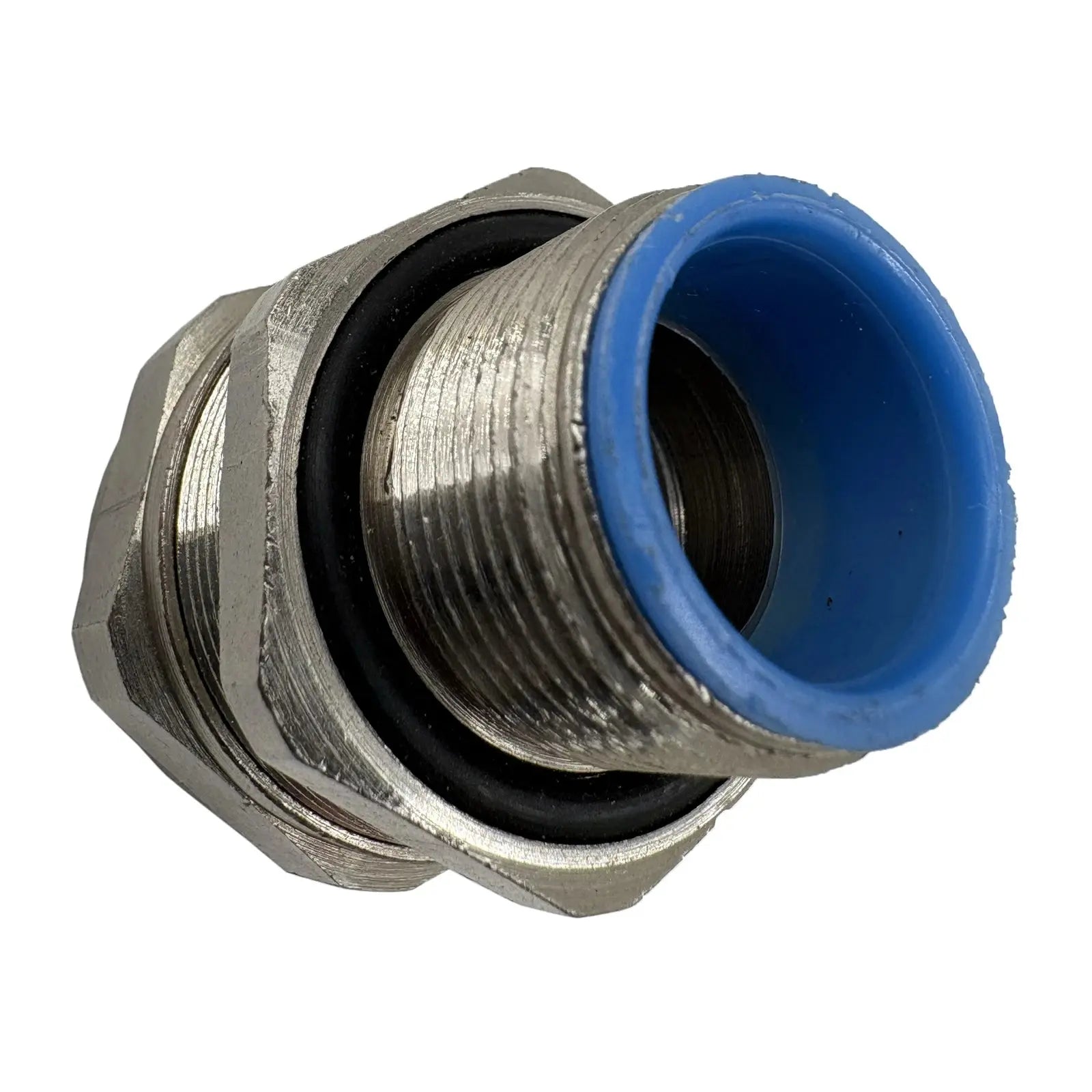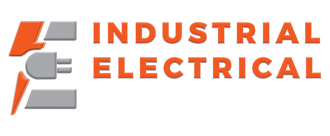
Conduit ondulé
9 produits
Affiche 1 - 9 de 9 produits
















Conduits ondulés : solutions flexibles de gestion des câbles
La gaine ondulée est une solution polyvalente pour la gestion des câbles dans divers environnements industriels et commerciaux. Elle offre protection, organisation et flexibilité, ce qui en fait un élément essentiel de tout système de gestion de câbles.
Comprendre les bases des conduits ondulés. Les conduits ondulés, aussi appelés conduits flexibles, sont des tubes en matériau flexible utilisés pour protéger et guider les câbles électriques. Leur fonction principale est de fournir un cheminement sécurisé et fermé pour les câbles, les protégeant des facteurs externes susceptibles de les endommager ou d'altérer leurs performances.
Différents types de gaines annelées sont disponibles, chacune conçue pour répondre aux exigences spécifiques de l'industrie. Définition et fonction d'une gaine annelée : une gaine annelée est un tube creux dont la surface extérieure présente des stries qui lui confèrent une texture ondulée. Ces stries améliorent non seulement la flexibilité de la gaine, mais lui confèrent également une résistance et une rigidité accrues. La gaine est généralement fabriquée à partir de matériaux tels que le PVC, le PE ou le métal, selon l'application et les conditions environnementales. Sa fonction principale est de protéger les câbles des dommages physiques, de l'humidité, des produits chimiques, des températures extrêmes et d'autres facteurs externes susceptibles de compromettre leur intégrité. De plus, elle permet d'organiser et d'acheminer les câbles de manière ordonnée, réduisant ainsi les risques d'enchevêtrement et garantissant un accès facile pour la maintenance et le dépannage.
Matériaux et types de conduits ondulés
Le choix du matériau du conduit ondulé dépend de la nature de l’installation et du niveau de protection requis.
Les conduits en PVC (polychlorure de vinyle) sont couramment utilisés dans les applications résidentielles et commerciales en raison de leur rentabilité, de leur légèreté et de leur facilité d'installation. En revanche, les conduits en PE (polyéthylène) offrent une résistance accrue aux produits chimiques et aux rayons UV, ce qui les rend adaptés aux environnements extérieurs et dangereux. Les conduits métalliques ondulés, comme l'acier galvanisé ou l'aluminium, offrent une résistance mécanique supérieure et une protection contre les interférences électromagnétiques (IEM) et les interférences radioélectriques (RFI). Les conduits métalliques sont principalement utilisés dans les environnements industriels où une protection robuste est nécessaire. Pour choisir le bon type de conduit ondulé, il est essentiel de prendre en compte les exigences spécifiques de l'installation. Par exemple, dans les zones à haut risque d'exposition à des substances corrosives, comme les usines chimiques ou les stations d'épuration, les conduits en PVC ou en PE résistants aux produits chimiques constituent le choix idéal. De plus, certaines applications peuvent nécessiter des caractéristiques supplémentaires, telles que la résistance au feu ou un faible dégagement de fumée. Dans ces cas, des types de conduits ondulés spécialisés, tels que les conduits en PVC ignifuge ou sans halogène, doivent être utilisés pour garantir la sécurité et la conformité de l'installation. Il convient de noter que le processus d'installation des conduits ondulés varie en fonction du matériau et de l'application. Les conduits en PVC et en PE sont généralement installés à l'aide de raccords et de connecteurs spécifiquement conçus pour leurs matériaux respectifs. Les conduits métalliques, en revanche, nécessitent souvent des outils et des techniques spécialisés pour couper, plier et assembler les sections. Une installation correcte est essentielle pour garantir l'efficacité et la longévité du système de conduits ondulés. Il est recommandé de suivre les directives du fabricant et de consulter un professionnel qualifié pour garantir la conformité aux normes et réglementations du secteur. Le rôle des conduits ondulés dans la gestion des câbles Une bonne gestion des câbles est de la plus haute importance dans tout système électrique. Les conduits ondulés jouent un rôle crucial pour assurer une gestion efficace et fiable des câbles, offrant de nombreux avantages. Importance d'une bonne gestion des câbles Une gestion efficace des câbles est essentielle pour maintenir l'intégrité et la fonctionnalité du système électrique. Il permet de prévenir l'endommagement des câbles, de réduire les pertes de signal et de minimiser les risques de pannes électriques, qui peuvent entraîner des temps d'arrêt coûteux, des risques pour la sécurité et des interruptions de fonctionnement. Une gestion adéquate des câbles facilite également la maintenance, le dépannage et l'extension ou la modification future du système électrique. Comment les gaines ondulées améliorent la protection des câbles ? Les gaines ondulées offrent une protection robuste aux câbles contre les dommages physiques causés par les chocs, l'abrasion ou l'écrasement. En enfermant les câbles dans un conduit flexible et durable, elles les protègent des facteurs externes tels que l'humidité, les produits chimiques, la poussière et les températures excessives. La construction robuste des gaines garantit la sécurité et l'intégrité des câbles, même dans des environnements exigeants. Mais examinons de plus près les avantages des gaines ondulées. L'un de leurs principaux avantages est leur polyvalence. Les gaines ondulées sont disponibles en différentes tailles et matériaux, ce qui leur permet de s'adapter à différents types de câbles et exigences d'installation. Qu'il s'agisse de câbles d'alimentation, de données ou de télécommunications, il existe une solution de gaine ondulée adaptée à vos besoins. De plus, les gaines ondulées offrent une grande flexibilité dans le routage des câbles. Sa conception ondulée facilite les pliages et les manœuvres autour des obstacles, ce qui en fait la solution idéale pour les configurations complexes de gestion des câbles. Cette flexibilité permet non seulement de gagner du temps lors de l'installation, mais garantit également une organisation et une protection optimales des câbles sur toute leur longueur. De plus, la gaine ondulée résiste aux rayons UV, ce qui lui permet de supporter une exposition prolongée au soleil sans se dégrader. Elle est donc idéale pour les installations extérieures où les câbles sont vulnérables aux intempéries. De plus, certains types de gaines possèdent des propriétés ignifuges, ajoutant une couche de sécurité supplémentaire au système de gestion des câbles. Avantages de l'utilisation de gaines ondulées pour la gestion des câbles : L'utilisation de gaines ondulées pour la gestion des câbles offre plusieurs avantages significatifs qui contribuent à l'efficacité et à la fiabilité globales du système électrique. Flexibilité et durabilité : L'un des principaux avantages des gaines ondulées est leur flexibilité. Elles peuvent être facilement pliées, tordues ou ajustées pour s'adapter au cheminement souhaité, permettant une installation fluide et efficace des câbles. Cette flexibilité est particulièrement utile lorsque les câbles doivent contourner des obstacles ou traverser des espaces restreints. De plus, la durabilité des gaines ondulées garantit une bonne protection des câbles contre les forces externes. La construction robuste du conduit peut résister aux environnements difficiles, tels que les températures extrêmes ou l'exposition aux produits chimiques, sans compromettre l'intégrité des câbles. Cette durabilité garantit la longévité et la fiabilité du système électrique, réduisant ainsi les réparations ou les remplacements fréquents. Facilité d'installation : l'installation d'un conduit ondulé est simple et relativement facile. Léger, le conduit est facile à manipuler et à transporter. Il peut être coupé à la longueur souhaitée à l'aide d'outils simples, permettant une personnalisation précise pour répondre aux exigences spécifiques de l'installation. De plus, la texture ondulée du conduit augmente la friction, ce qui empêche les câbles de glisser à l'intérieur. Cela garantit que les câbles restent bien organisés et dans leurs chemins prévus, minimisant ainsi les risques d'emmêlement ou de dommages. Le conduit ondulé offre une solution de gestion des câbles économique, notamment par rapport à d'autres systèmes plus complexes et spécialisés. Son prix abordable en fait un choix populaire pour les installations de petite et grande envergure, offrant une solution de gestion des câbles efficace et fiable à un prix abordable. De plus, la facilité d'installation réduit les coûts de main-d'œuvre, contribuant ainsi à sa rentabilité. L'installation nécessitant moins de temps et d'efforts, le coût global du projet peut être considérablement réduit, faisant des gaines ondulées une option économique pour la gestion des câbles. En conclusion, les avantages des gaines ondulées pour la gestion des câbles sont nombreux. Leur flexibilité, leur durabilité, leur facilité d'installation et leur rentabilité en font un choix pratique pour diverses applications de systèmes électriques. En choisissant des gaines ondulées, vous garantissez un acheminement efficace des câbles, des performances fiables et des économies à long terme. Choisir la gaine ondulée adaptée à vos besoins : Choisir la gaine ondulée adaptée est crucial pour une gestion et une protection optimales des câbles. Plusieurs facteurs doivent être pris en compte lors du choix. Facteurs à prendre en compte lors du choix d'une gaine ondulée : Lors du choix d'une gaine ondulée, vous devez évaluer des facteurs tels que les conditions environnementales, le type de câbles, l'indice de protection IP (Ingress Protection) requis et les réglementations ou normes sectorielles spécifiques. Ces facteurs vous aideront à déterminer le matériau, la taille et les autres spécifications de la gaine qui répondent le mieux à vos besoins. Par exemple, si vous travaillez dans un environnement difficile, avec des températures extrêmes ou une exposition à des produits chimiques, vous aurez peut-être besoin d'un conduit en matériau durable comme le PVC ou l'acier inoxydable. En revanche, si vous manipulez des câbles de données sensibles nécessitant une protection élevée contre les interférences électromagnétiques (EMI), vous pouvez opter pour un conduit doté de propriétés de blindage supplémentaires. Conseils pour une mesure et une installation correctes : pour une installation réussie, des mesures précises sont essentielles. Mesurez la longueur du câble et les coudes ou les virages que le conduit doit franchir. Prévoyez des marges de dilatation, si nécessaire. Il est également important de sélectionner les connecteurs ou raccords appropriés pour joindre les sections du conduit, afin de garantir une connexion sûre et fiable. Lors de l'installation, le souci du détail est essentiel. Commencez par monter les supports ou les suspensions du conduit à intervalles appropriés le long du cheminement. Cela fournira le soutien nécessaire et évitera toute contrainte excessive sur le conduit. De plus, pensez à utiliser des colliers ou des sangles pour fixer le conduit aux murs ou autres structures, garantissant ainsi sa stabilité et minimisant les risques de dommages. Introduisez délicatement les câbles dans le conduit, en veillant à ne pas dépasser sa capacité de remplissage. Un remplissage excessif du conduit peut entraîner une augmentation des frottements et endommager les câbles. Si vous manipulez un grand nombre de câbles, il peut être nécessaire d'utiliser plusieurs conduits ou d'envisager un conduit plus grand pour accueillir le faisceau de câbles. Une fois les câbles en place, assurez-vous de bien fixer le conduit à l'aide de fixations ou de colliers appropriés. Cela empêchera tout mouvement ou déplacement susceptible d'endommager les câbles ou de compromettre l'intégrité globale de l'installation. Enfin, il est essentiel d'inspecter minutieusement l'ensemble de l'installation afin de détecter tout espace, pli ou autre problème susceptible de compromettre le système de gestion des câbles. Résolvez rapidement tout problème pour garantir la longévité et l'efficacité du conduit. Conseils d'entretien et de sécurité pour les systèmes de conduits annelés : l'entretien des systèmes de conduits annelés est essentiel pour garantir leur fonctionnalité et leur sécurité. Des inspections régulières et le respect des consignes de sécurité sont essentiels pour prévenir les problèmes potentiels et atténuer les risques. Inspection et entretien réguliers : inspectez régulièrement l'état du système de conduits annelés afin d'identifier tout signe de dommage, notamment des fissures, des bosses ou des déformations. Soyez attentif aux raccords ou connexions desserrés qui pourraient nécessiter un serrage ou une réparation. Retirez tous les débris ou obstructions susceptibles de s'accumuler dans le conduit, car ils peuvent gêner le mouvement du câble ou provoquer une accumulation de chaleur. Nettoyez régulièrement l'extérieur du conduit pour éliminer la saleté, la poussière ou les substances corrosives susceptibles d'en endommager la surface. Inspectez l'isolation du câble pour détecter tout signe d'usure ou de détérioration et remplacez rapidement tout câble endommagé. Précautions et consignes de sécurité : lorsque vous travaillez avec des systèmes de conduits annelés, respectez les consignes de sécurité appropriées pour vous protéger et protéger les autres. Évitez de travailler sur des systèmes électriques sous tension et assurez-vous que l'alimentation est coupée avant toute intervention de maintenance ou de modification. Utilisez un équipement de protection individuelle (EPI), tel que des gants, des lunettes de protection et des vêtements appropriés, pour minimiser les risques de blessure. Suivez les consignes et réglementations de sécurité spécifiques au secteur lors de l'installation ou de la manipulation de systèmes de conduits annelés, afin de vous assurer de la conformité aux codes et normes électriques. Les conduits annelés offrent des solutions de gestion des câbles flexibles et fiables, offrant protection, organisation et durabilité. En comprenant ses principes de base, ses avantages et son entretien approprié, vous pourrez prendre des décisions éclairées lors du choix et de l'utilisation de ce composant essentiel de votre système électrique. N'oubliez pas de prendre en compte les exigences spécifiques de votre application et de demander conseil à un professionnel, si nécessaire, pour garantir les performances et la sécurité optimales de votre système de gestion des câbles.
Besoin de commandes en gros ou de recommandations d'experts sur CF-B-CC ?
Vous souhaitez commander des CF-B-CC en gros ou avez besoin d'aide pour choisir la solution industrielle idéale ? Notre équipe est là pour vous aider avec des devis personnalisés, des recommandations de produits et des conseils techniques. Que vous soyez électricien, entrepreneur ou chef d'entreprise, nous proposons des solutions sur mesure pour répondre à vos besoins.
📩 Contactez-nous ou discutez avec nous en direct pour une assistance instantanée !
Découvrez notre collection mensuelle d'offres de folie !
Ne manquez pas nos énormes économies dans notre magasin ! Découvrez les meilleures offres :
Explorez ces catégories maintenant et profitez des meilleures offres avant qu'elles ne disparaissent !
- Tous les produits de notre gamme – Des produits de qualité supérieure sélectionnés avec soin pour vous.
- Meilleures ventes – Articles préférés des clients et articles très demandés.
- Offres spéciales et soldes Watts – Remises à durée limitée sur des produits incontournables.
- Watts New – Nouveautés et dernières innovations.
-
Toutes les collections – Explorez tout ce que nous avons à offrir.
Explorez ces catégories maintenant et profitez des meilleures offres avant qu'elles ne disparaissent !
N'oubliez pas de consulter nos remises massives jusqu'à épuisement des stocks !
Vu récemment
Bulletin d'information Watts Current
Restez connecté avec les derniers produits électriques industriels, les offres exclusives et les mises à jour d'experts.
Inscrivez-vous maintenant et ne manquez rien



